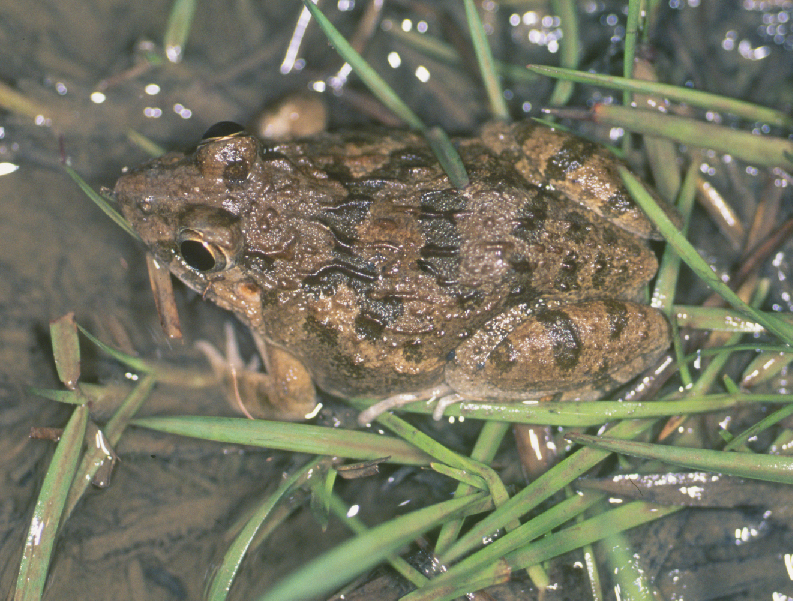Rice Field Herbicide Butachlor Is Toxic to Frog Tadpoles
New findings from USGS and Taiwanese researchers suggest that butachlor has significant reproductive impacts on frogs even below the recommended application concentration. Butachlor (N-butoxy-methyl-2-chloro-20,60-diethyl-actanilide) is the most commonly used herbicide on rice paddy fields in Taiwan and throughout Southeast Asia. Paddy fields are man-made habitats that are commonly used for reproduction by many species of frogs, but, little is known regarding the ecological and physiological effects of butachlor on frogs.
A recent study published in Ecotoxicology (Liu et al. 2011) examined acute and chronic effects of butachlor on tadpoles of the alpine cricket frog (Fejervarya limnocharis), an Asian species that breeds in rice paddies when they are first flooded. The timing coincides with typical butachlor application regimes, and because of the timing of their breeding behavior cricket frogs can be exposed to higher concentrations of butachlor than other frogs.
Tadpoles were hatched from egg masses collected from paddy fields in Taiwan, and then assigned to treatments of zero, 0.05, 0.1, 0.2, 0.4, 0.8, 1.6 and 3.2 mg/l of butachlor. All concentrations were below the recommended application rate of 4.8 mg/l of butachlor in paddy water. The experiments showed that 0.87 mg/l of butachlor would kill 50% of the tadpoles after 96 hours of exposure -- a concentration far below the recommended application rate.
Although the results suggested that cricket frog tadpoles were less sensitive than other amphibians that breed in rice paddy fields -- such as the narrow-mouthed toad (Microhyla ornata; 0.53 mg/l) and Guenther’s frog (Rana guentheri; 0.74 mg/l) -- the surviving tadpoles still exhibited a range of impacts, including delayed metamorphosis. Also, butachlor was genotoxic to tadpoles; the number of DNA strand breaks in the red blood cells of cricket frog tadpoles increased with increasing butachlor concentrations.
Butachlor likely has widespread negative impacts on many species of amphibians, although the severity depends on each species’ sensitivity, butachlor's short half-life and the pattern and timing of its application. Staggered spraying in adjacent fields may create refugia with lower butachlor concentrations, which adult frogs may be able to detect.
This study was supported by a Taiwan National Science Council Grant. Any use of trade, product, or firm names is for descriptive purposes only and does not imply endorsement by the US Government. The study is contribution 417 of the USGS Amphibian Research and Monitoring Initiative (ARMI).
For further reading:
Liu Wan-Yi, Wang Ching-Yuh, Wang Tsu-Shing, Gary M. Fellers, Lai Bo-Chi, Kam Yeong-Choy. 2011. Impacts of the Herbicide Butachlor on the Larvae of a Paddy Field Breeding Frog (Fejervarya limnocharis) in Subtropical Taiwan. Ecotoxicology 20(2): 377-394. doi: 10.1007/s10646-010-0589-6 USGS: http://www.werc.usgs.gov/ProductDetails.aspx?ID=4239
WERC Publication Brief: Rice Field Herbicide Butachlor Is Toxic to Taiwanese Frog Tadpoles. Updated April 2011. http://www.werc.usgs.gov/ProductDetails.aspx?ID=4243
WERC Point Reyes Field Station. http://www.werc.usgs.gov/pointreyes

